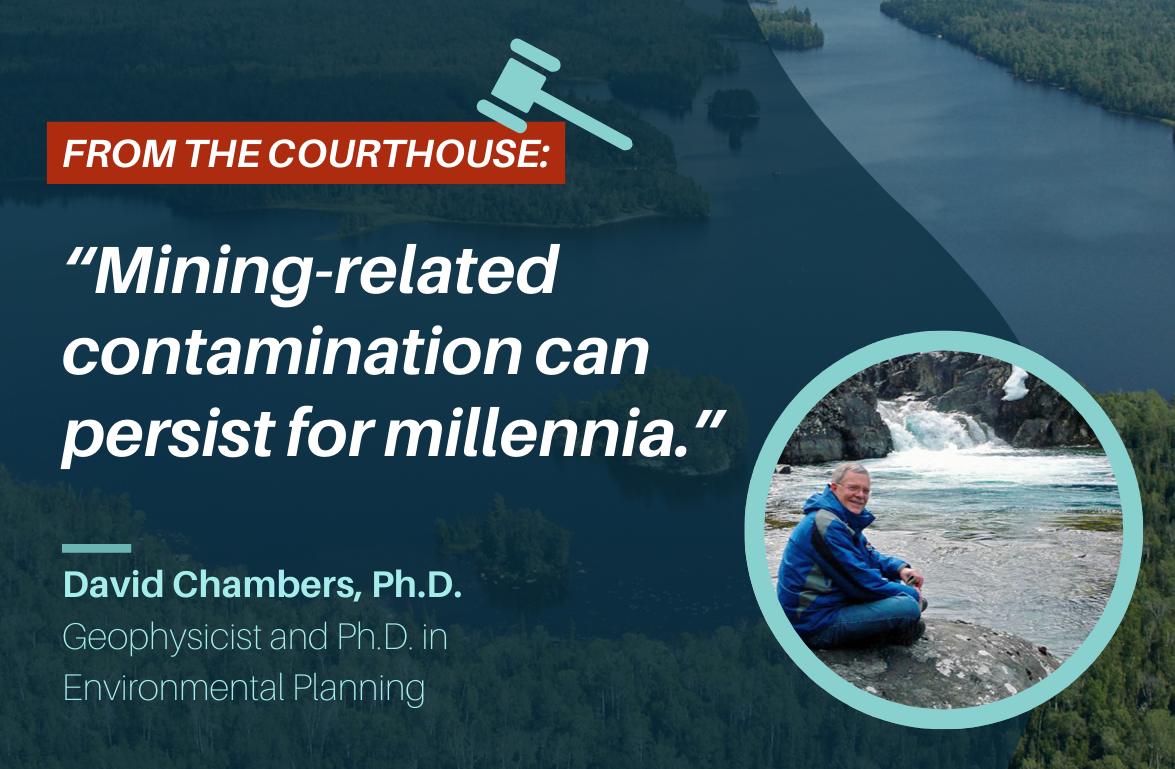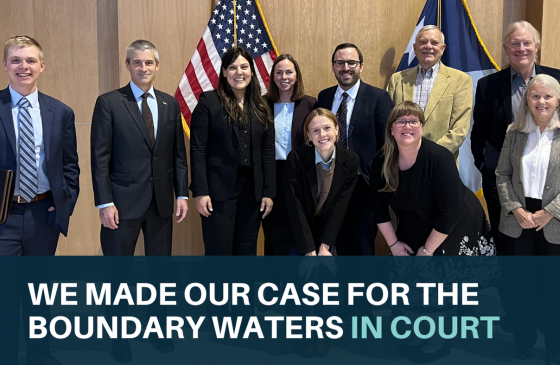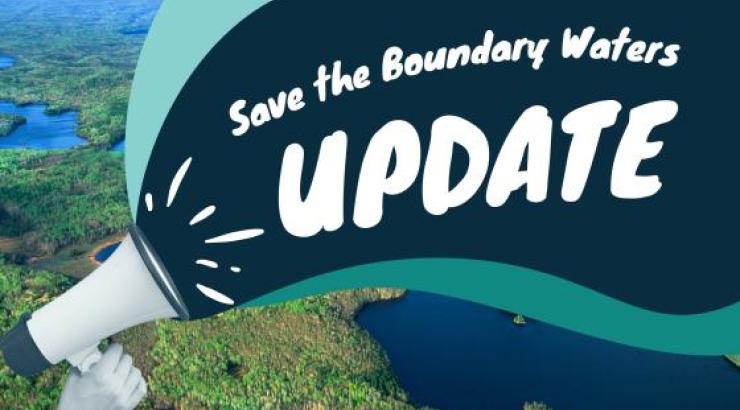For the past week and a half, we’ve been in court before a state administrative law judge in St. Paul, presenting evidence that in order to protect the Boundary Waters from the likelihood of pollution, impairment, or destruction, the Minnesota Department of Natural Resources (DNR) must amend its rules to prohibit copper-sulfide mining in the Boundary Waters watershed.
The case is straightforward: Copper-sulfide mining anywhere in the Boundary Waters watershed would produce industrial noise, light pollution, and water pollution. Sulfate would reach surface waters that flow downstream into the Wilderness, degrading water quality in the Boundary Waters, and fueling the formation of methyl-mercury, a potent neurotoxin that bioaccumulates in the food web and increases the mercury burden in fish, as well as the wildlife and people who eat fish.
The rules – adopted 31 years ago – are inadequate to protect the Boundary Waters and its watershed from pollution. First, state and federal law prohibit any water quality degradation in the BWCA since sulfide-ore copper mines always pollute. Copper-sulfide mining and the Boundary Waters watershed don’t mix, but the rules do not prohibit this type of mining upstream of the Nation’s only canoe-country wilderness. Second, the Minnesota DNR puts its faith in its own environmental review and permitting processes, arguing that the law prohibits it from permitting any mine predicted to pollute the Wilderness. But as found by two seminal studies, environmental review documents consistently fail to predict the pollution that occurs at mines once they are built. This lesson holds true in Minnesota. The EPA and Minnesota Supreme Court have rejected multiple permits issued for the PolyMet/NorthMet mine. Had it not been for legal challenges brought by the organizations fighting PolyMet, the deeply flawed mine that emerged from review and permitting likely would have been built by now. Thus, only a rule change that prohibits copper mining in the watershed of the Boundary Waters will suffice.
We aim to change the rules so that sulfide-ore copper-nickel mining is banned in the entire watershed – including the portion upstream of the Wilderness, which is currently not off-limits to copper-nickel mining proposals on State-owned lands.
During the trial these last days, our legal counsel introduced our expert witnesses and cross-examined the DNR and Twin Metals witnesses. Our witnesses presented excellent testimony demonstrating that sulfide-ore copper mining degrades nearby waters and that permitting processes typically fail to predict the pollution that actually occurs after mines are built, among other critical aspects.
David Chambers, Ph.D, an expert on environmental impact statements for mining projects, explained in front of the court how poor analysis and over-optimism often underestimate how much pollution a mine will cause and the consequences:

We need your help to keep the Boundary Waters’ pristine water clean for generations to come. Once toxic copper mining pollution degrades the Boundary Waters, it’s polluted forever; it can’t be mitigated.
Our litigation efforts are key to protecting the Boundary Waters Canoe Area Wilderness - and will be crucial in the coming years in particular. Litigation allows us to escalate strategic legal challenges, rally public support, and push for protections at the local, state, and federal levels.



